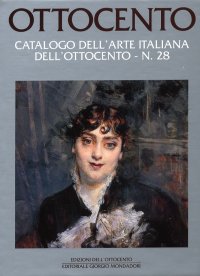Giovanni Boldini. Il Piacere
Rovereto, Mart, November 14, 2020 - February 28, 2021.
Edited by Beatrice Avanzi and Tiziano Panconi.
Genova, 2020; paperback, pp. 368, col. ill., col. plates, cm 24x28.
cover price: € 54.00
|
Books included in the offer:
Giovanni Boldini. Il Piacere
Rovereto, Mart, November 14, 2020 - February 28, 2021.
Edited by Beatrice Avanzi and Tiziano Panconi.
Genova, 2020; paperback, pp. 368, col. ill., col. plates, cm 24x28.
FREE (cover price: € 54.00)
Ottocento. Catalogo dell'Arte Italiana dell'Ottocento. Vol. 30
Milano, 2001; paperback, pp. 495, b/w ill., col. plates, cm 22x30,5.
FREE (cover price: € 40.00)
Ottocento. Catalogo dell'arte italiana dell'Ottocento. VOL. 28
Milano, 1999; bound, pp. 800, col. plates, cm 22x30.
FREE (cover price: € 77.47)
Annuario della Scuola Archeologica di Atene e delle Missioni Italiane in Oriente, Supplemento 11. Ritratti privati greci nellEgitto tolemaico
Elena Ghisellini
Edizioni All'Insegna del Giglio/ Periodici
Italian and English Text.
Borgo San Lorenzo, 2022; paperback, pp. 244, b/w and col. ill., cm 21x31.
(Annuario della Scuola Archeologica di Atene e delle Missioni Italiane in Oriente. Supplemento. 11. 2022).
series: Annuario della Scuola Archeologica di Atene e delle Missioni Italiane in Oriente. Supplemento
ISBN: 960-9559-30-1 - EAN13: 9789609559300
Subject: Essays on Ancient Times
Period: 0-1000 (0-XI) Ancient World
Languages: 

Weight: 1.15 kg
Finally, a terminological clarification. As is well known, there is a lively debate on the meaning of the adjective "private" and on the legitimacy of its use in reference to terms such as portraiture, portraiture, statuary and the like. In our case, the use of the adjective in the proper sense turns out to be misleading because, since the contexts of discovery are almost never known, we do not know whether a portrait was intended for exhibition in a public or private sphere. Here the adjective is therefore used in a conventional way, in the sense of "non-regal", to designate a sculpture that represents an individual who does not belong to the royal family.

Baia grande. La pialassa Baiona ultima frontiera per una valle salmastra
Konrad. Per quanto un'oca allunghi il collo non diventerà mai un cigno










